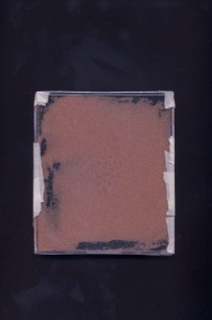What do you get if you mix a mafia boss with a modern art curator?
Answer: someone who makes you an offer you can't understand.
In the previous entry of this series, I had a go at the Art Zuid 2013 exhibition for their poorly curated outdoor sculpture choice of post-modern nonsensical "art".
However, as you can see by the title of this series, this is in my opinion a wider problem in Holland and in today's article I criticize what, in my opinion, should be the last bastion of hope for high quality esthetics and art in the Netherlands: the Rijksakademie.
I found out about the Rijksakademie while doing research and trying to find an art academy in Amsterdam that had kept the old master's traditions alive.
With such a name to uphold, I expected a group of people pushing the disciplines of academic drawing, painting and sculpting to the limit, and churning out works of art that would be known worldwide. An institute sought by artists with high aspirations, where masters would take students under their wing, and which would be the envy of today's academies in Florence and Paris.
You can imagine my surprise when I arrived to their homepage and saw a slide show, in which they put forward what I presume is their 'best foot':
So it is safe to say that the Alamo has fallen. The Rijksakademie is now totally divorced from the esthetic and artistic values that put Dutch art on the map, and is instead engaged in some wild goose (or duck carcass) chase. Some weird sort of experimental ... ehm ... experiment.
In my next article I will try and speculate how and why this is the case, but for now let's see if we agree whether it IS the case.
To try and drive this point home, I've prepared a series of photos of random images downloaded from the Internet. Of all these random things, one of them is a piece of art made by a resident artist of the Rijksakademie, and you must guess which one it is:
A guy in a corner with some trees and fruit on the floor and a plastic dead dog.
A man holding a baseball bat wearing a red shirt.
A woman drinking from different glasses, with mandarins while someone pours water, in Holland's Got Talent style
Some kind of figure's image peeled away and destroyed.
A high-tech-looking rubber carpet.
A rather crappy painting with people.
A metal fence.
A guy jumping in the dust on some industrial grounds.
Two monitors with business men shaking hands.
Photo of a parking lot with some cars and trees around.
A board burnt and melted with some colors.
A board with some masking tape, where something was probably painted before.
Notice you should already be worried by the fact that the piece of art doesn't exactly jump out at you from this series. That in itself is a sign of something...
Now, as for the answer. Did you guess which one was the Rijksakademie piece of art?
Well, surprise!!! They are ALL Rijksakademie pieces of art.
Yes. These beautiful creations is what these people are busy with, only a stone's throw away from the Rijksmuseum, which just reopened and is now hailed as one of the best museums in the world.
Not surprisingly, some of this stuff is being show in the Tate Modern in London. An artistic institution so rarefied, it can get away with showing you just about anything as art and get away with it, so long as the story sounds plausible.
A case in point is Gabriel Orozco's white shoe box exhibition piece, which is...well a white shoe box:
The curator says, with that typical deep high-brow tone of theirs, that Orozco is an artist that "often likes to disappoint people".
I think that is a disgraceful statement. When even the wish to disappoint is praised, we've just been stripped of our ability to call a turd a turd.
In my submission, the current philosophy of the Rijksakademie is a sham, creating turds and then dressing them up in all sorts of convoluted explanations to make them seem interesting.
Beautiful art is on its own. And when I say that, I mean it does not count with the 3.3 Million Euros that the Secretary of Education, Culture and Science spends on the Rijksakademie every year to make this kind of stuff.
Now, less I start to sound like a fascist to all those free experimental souls out there, there should be room for everyone to play. So my take on it is this:
IF, you want to throw a plastic white dog on top of some dry Christmas trees and give a name to it, or put the carcass of a duck inside a cement crusted bulldozer blade, then by all means go ahead and do it, but don't expect:
1. Praise or recognition,
2. Entire organizations at your service, and
3. Subsidies
Do it like everybody else does and try to see if you're stuff is really worth making, and whether it is of value to anyone other than yourself and your little club. If this strange and unique category you've dreamed up is only interesting to 1 person, well, you have your answer and government shouldn't be sponsoring your randomness over anyone else's.
This last point is important, because it implies that tax payers are funding art that not everyone likes or approves of. Technically buying things they would otherwise despise at the benefit of a few artists and ignoring others.
It also means that the government is having an opinion on which type of art deserves funding and which type doesn't, which should not be part of public policy in my submission.
Under their 'donations' page the Rijksacademie tells us to "Support the art of the future, and the artists of today".
I really hope the art of the future looks better than this.





































